10 Questions for Conductor Laurence Equilbey | reviews, news & interviews
10 Questions for Conductor Laurence Equilbey
10 Questions for Conductor Laurence Equilbey
French music director of the Accentus Choir and Insula Orchestra talks different styles
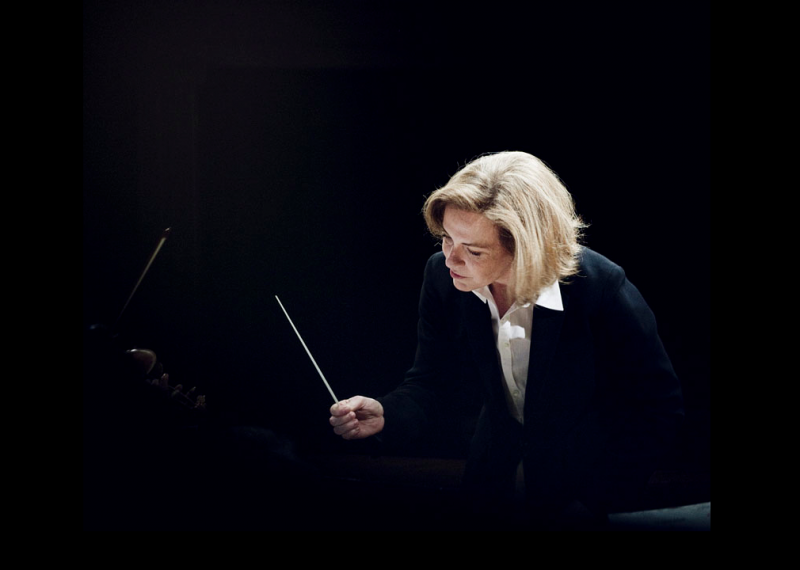
It’s a sunny afternoon at altitude – 1,082 metres, to be precise – in the precincts of France’s highest historic building, the austerely impressive early Gothic Abbey-Church of St-Robert, La Chaise-Dieu.
For Laurence Equilbey, the members of the Choeur Accentus she founded in 1991 and the players of her Insula Orchestra which followed in 2012 with the support of the Conseil departemental des Hauts-de-Seine, it’s been more of a rush. An interview which should have taken place on the train they all took from Paris to Lyon didn’t happen, so that needs to be squeezed in, and then there’s a rehearsal before the evening’s concert. I cede first slot to my fellow writer, who’s had the stress of waiting, and find that my relaxed half-hour with this most genial and expressive, if fundamentally very serious conductor, shrinks to 20 minutes as anxious orchestral folk break in to summon her to the Abbey (pictured below: the performance in St-Robert).
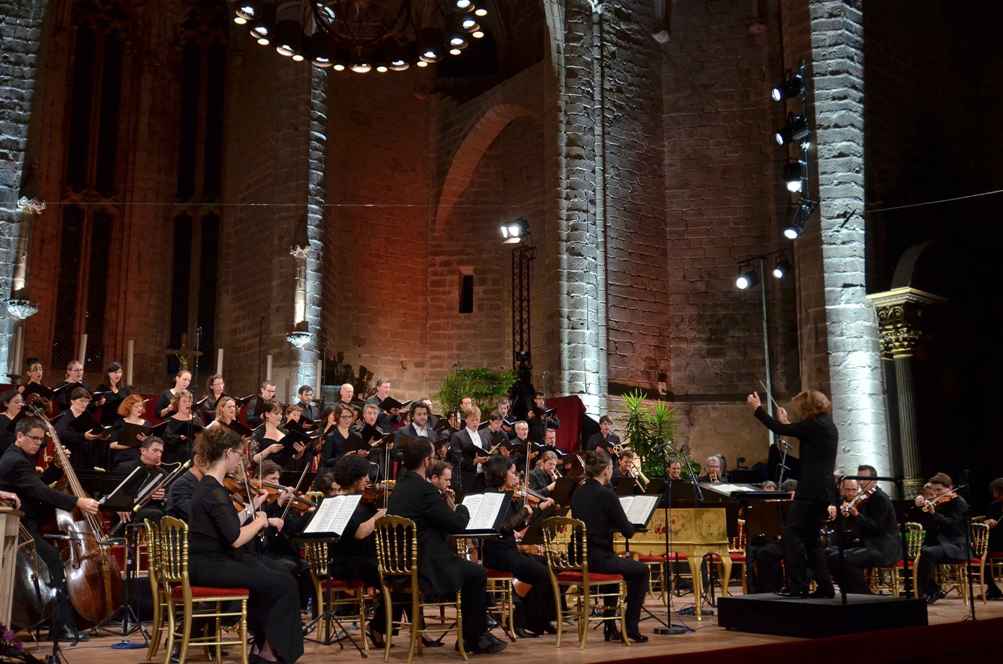 No matter; we’ve covered the essential points of the impending programme the ensemble are also bringing with them to the Barbican next Monday – some problems with the choir in the resonant acoustic may be solved in London – and a whistlestop tour of Equilbey’s distinguished career to date. My colleague prides himself on not having raised “the woman conductor situation”, but I know that it’s something Equilbey has spoken passionately about on many occasions, so it’s not to be omitted, and if she sidesteps it at first that may be a misunderstanding because she doesn’t subsequently shy away from the way it is now.
No matter; we’ve covered the essential points of the impending programme the ensemble are also bringing with them to the Barbican next Monday – some problems with the choir in the resonant acoustic may be solved in London – and a whistlestop tour of Equilbey’s distinguished career to date. My colleague prides himself on not having raised “the woman conductor situation”, but I know that it’s something Equilbey has spoken passionately about on many occasions, so it’s not to be omitted, and if she sidesteps it at first that may be a misunderstanding because she doesn’t subsequently shy away from the way it is now.
DAVID NICE: Perhaps this is a slightly predictable way to start, but within the field of period-instrument orchestras and early music, there are a fair number of female conductors and directors from the violin, while in the wider world it’s a slower process. You have experience of both. So how does it feel to you at this particular point?
LAURENCE EQUILBEY: First I was just a conductor in the widest sense, and I had a lot of invitations to conduct a modern orchestra. But I studied in Vienna with [Nikolaus] Harnoncourt, and I have this goût, yes, this taste for Baroque and classical music with period instruments. So I had the opportunity to build an orchestra because I had experience with the Akademie für alte Musik Berlin, the Orchestra of the Age of Enlightenment and Concerto Köln, but once per year was not enough for me, though I liked it very much. It was a paradox, because I like all the music I conduct but with the modern orchestras I say yes, OK, from Schubert onwards, but not before that because I don’t like it with modern instruments – it’s me, I don’t like Mozart on modern instruments, I prefer the colours and the balance and the culture of the musicians in period-instrument orchestras. Because I think when you conduct music of the 18th century you have to know very well the 17th century, and when you play 17th you have to know the 16th, you have to have a minimum 100 years of context. It’s good when you know what comes next too, but that’s why in this type of period instruments you have to choose a mix between very Baroque-inclined musicians and some more modern, also for the technique it’s important. I don’t know if that’s the right answer…
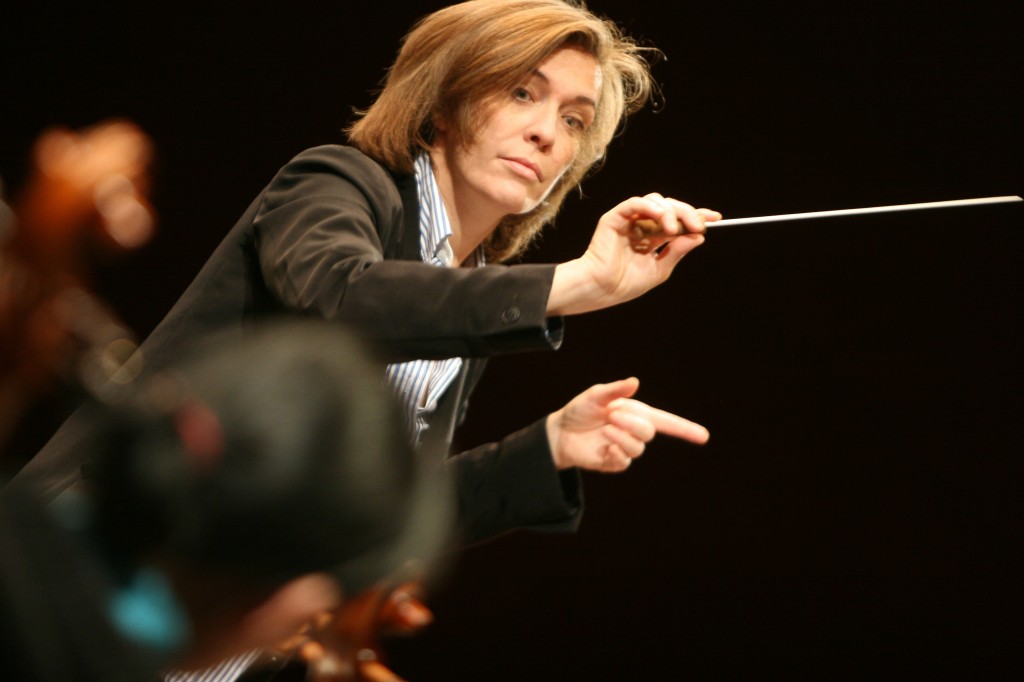 I was veering more towards the women conductors question. It seems to me to suddenly be changing much more quickly – do you think so?
I was veering more towards the women conductors question. It seems to me to suddenly be changing much more quickly – do you think so?
No, not at all. I think the opposite. It’s really stable, stable, stable. For four years in France – I don’t know how it is in England – we remain at four per cent of conductors being women. Today I think the normal proportion would be 15 per cent. It’s always four. It means a lot of women are trained, that’s OK, but they are not invited to conduct. But I must say I didn’t found this orchestra because I am not invited, I just had the opportunity because of this project in the Île Seguin [on the Seine in the western suburbs of Paris] to build an orchestra on period instruments, because in my repertoire I have a lot of choral and modern orchestral music, I am a great collector and now I try to refine to the period I especially like (Equilbey pictured above by Agnes Mellon).
You now have a good relationship with the choir and the instrumental musicians, you know them very well. Do you allow them to make decisions in the phrasing?
Yes, absolutely, and also the originality of this orchestra after a few seasons is that it will also invite guest conductors, which is a great opportunity, because if you want to conduct an orchestra on period instruments, you need to build. I have two ideas. On the one hand I want conductors who can bring something new to this question of period instruments: for example, I dream of Andris Nelsons, I like him very much and I think he could be very happy with these players – the parallels already there are Rattle and Jurowski with the Orchestra of the Age on Enlightenment. Perhaps I could call upon Teodor Currentzis. And on the other hand other period-instrument specialists can come. It’s two different things.
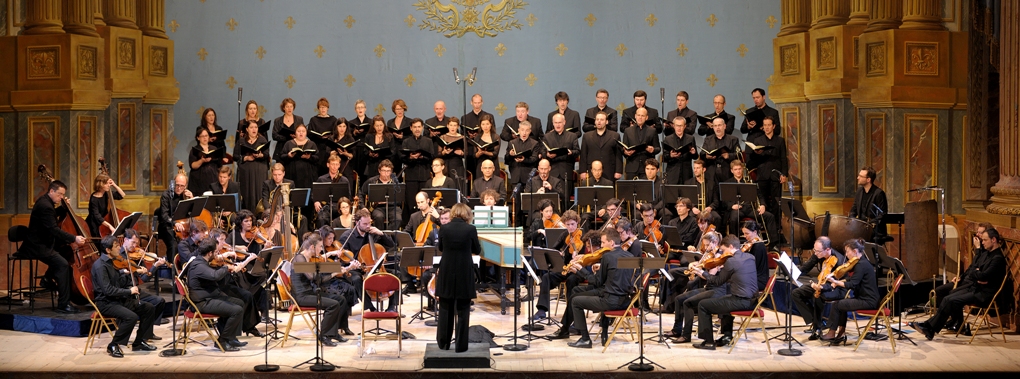 So they’re all people with a similar spirit – you are very communicative, I think you’ve said that you need to get everyone to listen but also to be in control without seeming too much to be so (choir, orchestra and conductor pictured above by Axel Coeuret). Abbado is the great example of that, isn't he, he also said "just isten", and that’s your creed. This must be difficult when you’re on tour, you’re going to so many different venues, different acoustics [Equilbey laughs] – this could not be more different from the Barbican, so you have to adjust very quickly.
So they’re all people with a similar spirit – you are very communicative, I think you’ve said that you need to get everyone to listen but also to be in control without seeming too much to be so (choir, orchestra and conductor pictured above by Axel Coeuret). Abbado is the great example of that, isn't he, he also said "just isten", and that’s your creed. This must be difficult when you’re on tour, you’re going to so many different venues, different acoustics [Equilbey laughs] – this could not be more different from the Barbican, so you have to adjust very quickly.
I have the chance, because we have an hour and a half to experiment.
One of your teachers was [the Finn] Jorma Panula, he’s known as a wonderful trainer of conductors.
He’s wonderful, he was very rigorous, but I was a bit sad to see that in an interview he said he’s against women as conductors.
But Susanna Mälkki studied with him as well.
Yes, but she’s Finnish, so the nationality made up for it. I also studied with Colin Metters and Denise Ham at the Royal Academy of Music, and in Vienna I studied at the conservatory with a teacher who’s not so well known. But I also worked there with Abbado and Harnoncourt, at that time I was a singer in the Arnold Schoenberg Choir, so I did a lot with them, you learn a great deal that way. For the technique with the choir I also worked a lot with Erik Eriksson.
Is it a very different technique conducting a choir as opposed to just an orchestra or even choir and orchestra combined?
Yes. In the time it took to build Accentus, I forgot a lot of my orchestral work in three to five years. After that I took more courses to rebuild a bit, because choral and orchestral conducting don’t require the same gestures. With woodwind, certainly, you have to accompany the breath, it’s very good to have this in your movements, but sometimes you need a real baton technique.
You’ve also conducted French operettes?
Just one – I won’t become a specialist in that. I was working with the Opéra Comique, we searched for a project, and they proposed to me [Reynaldo Hahn’s] Ciboulette. It’s very refined music, so I said OK, if I can work on the libretto, because it was impossible. We reduced it a lot and adapted a bit but it was like the bonsai, very carefully crafted. Otherwise it would have been too démodé. And the public has to laugh.
I understand you got the audience to sing as well.
Yes, because when I studied this piece I found there were two irresistible melodies, and I sing myself, so I thought, why not get people to sing along with us. It was at the end of the first act, and we got the public to learn the melodies, and had extra rehearsals before. I like projects with a large audience. I can do Grisey and Dusapin but I love to have contact with a large audience.
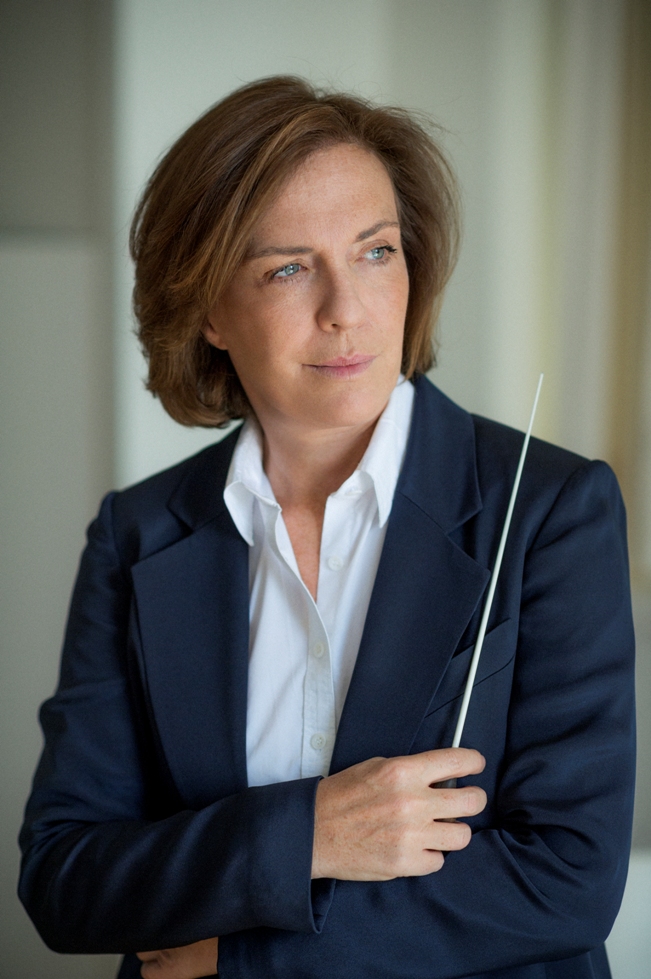 Your idea about communication – is it simply about energy to put it across? Because it strikes me that in a lot of period-instrument performances there is still a reserve. So what’s the secret for you?
Your idea about communication – is it simply about energy to put it across? Because it strikes me that in a lot of period-instrument performances there is still a reserve. So what’s the secret for you?
The players and the choir are very inspired, that’s what I work with, I would say we are in an electric connection. But it depends on the repertoire, it can vary. For example at the beginning of this programme you have the music of Zelenka, which changes when he does a parody of Frescobaldi. I am more a pre- [early] romantic person as a conductor. I like especially Bach – this humility – but my character is much more pre-romantic: Beethoven and Weber, up to about 1815.
This programme tonight is one you’re touring. Did you choose it very carefully as a trilogy of pieces?
Yes. I wanted to do the [Mozart Solemn] Vespers because we will next year record the “Coronation” Mass. These two works are in the Viennese “church trio” style, without violas, they’re close to each other in time, and it makes sense because the sonority of the instrumentation is exactly the same. I sang both in Vienna with Harnoncourt 30 years ago, so they have a sentimental meaning for me. There’s also a connection with the third work in that there’s also a Magnificat in the Vespers, and the Carl Philipp Emanuel Bach Magnificat s really first Baroque, but also paves the way to the classical period. It, too, is a rare piece but also a masterpiece, that’s very important. The Zelenka also is not well known, but it’s very interesting, this kind of craziness.
I know musical education is very important to you. How do you go about encouraging young people to listen to this kind of music?
We take a project and around it we try to have a constellation of compositions – I don’t know if you’ve seen the series of logbooks I’ve written like fiction online. And we can do things with visuals, for example with Orfeo ed Euridice by Gluck [with Franco Fagioli, due for CD release shortly], we got a graphic agency to do a beautiful abstract clip.
It is when Orfeo arrives at the Champs Elysées [Elysian Fields], in the wonderful music of “Che puro ciel”, I took three and a half minutes minutes of that and I asked them if they were interested to create something visual to express this new world. I have a lot of ideas for work with young people on the Île Seguin, by which I mean audience members between the ages of 16 and 24. You can stimulate the imagination a lot with the digital element, but I often invite these young people along, I see them before the concert but also we discuss how it was afterwards. And now I have a great community.
Next page: watch Laurence Equilbey conduct her forces in part of Mozart's "Coronation" MassThe opening of the "Gloria" from Mozart's "Coronation" Mass conducted by Laurence Equilbey
Share this article
The future of Arts Journalism
You can stop theartsdesk.com closing!
We urgently need financing to survive. Our fundraising drive has thus far raised £49,000 but we need to reach £100,000 or we will be forced to close. Please contribute here: https://gofund.me/c3f6033d
And if you can forward this information to anyone who might assist, we’d be grateful.

Subscribe to theartsdesk.com
Thank you for continuing to read our work on theartsdesk.com. For unlimited access to every article in its entirety, including our archive of more than 15,000 pieces, we're asking for £5 per month or £40 per year. We feel it's a very good deal, and hope you do too.
To take a subscription now simply click here.
And if you're looking for that extra gift for a friend or family member, why not treat them to a theartsdesk.com gift subscription?

Add comment